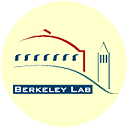|
BERKELEY, CA — Researchers at the U.S. Department
of Energy's Lawrence Berkeley National Laboratory have discovered the
mechanism by which an extremely rare protein mutation shields people from
cardiovascular disease. The discovery could lead to more potent drug therapies
that both target cholesterol deposition and prevent future accumulation.
|
 |
 |
|
A handful of villagers from this Italian town, Limone
sul Garda, possess an extremely rare protein mutation that protects
them from atherosclerosis.
(photo: DeCou Archive, UCSC) |
|
The mutation enables the protein to curb oxidation, a harmful process
in which molecules with unpaired electrons, also called free radicals,
scavenge electrons from healthy tissue. It's believed to play a role in
such diverse diseases as Alzheimer's, osteoporosis, and a form of heart
disease known as atherosclerosis.
In the latter disease, free radicals grab electrons from lipids that
line artery walls, sparking an inflammatory response that paves the way
for cholesterol deposition. The mutated protein, however, boasts an antioxidant
in the form of a sulfur-based residue that mops up unpaired electrons
and prevents them from triggering arterial inflammation, according to
John K. Bielicki of Berkeley Lab's Life Sciences Division.
Bielicki's research solves a paradox that has puzzled the medical world
since 1980, when a middle-aged Italian man was referred to Milan's Lipid
Center with high blood triglyceride levels, a risk factor for heart disease.
Further testing revealed the patient also possessed very low levels of
high-density lipoprotein (HDL), a good cholesterol that exports excess
cholesterol from coronary arteries. This process prevents plaque buildup
that impedes blood flow and contributes to heart attacks.
Patients with low levels of HDL are susceptible to heart disease, yet
the Italian exhibited no signs of pathology. This unlikely combination
intrigued scientists, who determined that the patient and a few dozen
people from his region possess a mutated form of apolipoprotein A-I protein.
This important protein, known as apoA-I, both manufactures HDL particles
and is responsible for their structure. In the mutated form, dubbed apoA-I
Milano because of its origin, one of the protein's amino acids is replaced
with an amino acid cysteine that has a sulfhydryl group. Somehow, this
tiny change enables a handful of Italians to possess low HDL levels and
remain free of cardiovascular disease. But how?
In pursuit of the answer, most researchers have focused on the most common
form of the protein. About 70 percent of proteins with the Milano mutation
come in pairs: one protein attaches to another to form a dimeric complex.
The key to this pairing is a disulfide bridge in which the sulfhydryl
group from one protein links with the sulfhydryl from another. This pairing
restricts HDL size and growth and has been attributed to the HDL deficiency
observed in people who have the mutation.
But 30 percent of proteins with the Milano mutation don't form dimeric
complexes. They remain unattached as monomeric complexes. In this solo
configuration, the sulfhydryl isn't occupied in a disulfide bond. It's
free, which enables it to partake in other reactions, says Bielicki. And
one of these reactions is quenching ions with unpaired electrons. In other
words, the free sulfhydryl form of the Milano mutation is a powerful antioxidant,
and Bielicki had a hunch it played a role in the mutation's ability to
fight cardiovascular disease.
In a laboratory setting, he compared the mutated protein with the normal
apoA-I protein, and determined that only the monomeric form of the mutation
protects lipids from oxidation. This confirmed Bielicki's hypothesis.
In most people, free radicals can go unchecked as they grab electrons
from lipids that line arterial walls. But for the less than 50 people
lucky enough to possess the Milano mutation, the monomeric form, with
its free sulfhydryl, mops up free radicals' unpaired electrons. This satisfies
free radicals' need to scavenge electrons from arterial lipids and prevents
a series of reactions that lead to cholesterol deposition.
"We identified a new activity associated with the Milano protein
that suggests how it protects against heart disease," Bielicki says.
"Next, we can use this knowledge to develop better therapies."
Simply stated, Bielicki believes a mutation found in a handful of Italians
could add a powerful component to today's peptide-based cardiovascular
disease therapies. Conventional apoA-I protein therapies remove cholesterol
from arteries using HDL. Next generation therapies, however, could couple
this process with the antioxidant mechanism found in the mutation, creating
a one-two punch that both cleans out cholesterol and prevents oxidation
that leads to future rounds of deposition. "A long-term solution,"
says Bielicki.
So far, he has isolated the structural domain from the mutation that
contains the functional cysteine residue. The next step is to include
this cysteine in a therapy that homes in on heart disease. Fortunately,
apoA-I already possesses this crucial targeting mechanism, providing a
pathway on which researchers can model a pharmaceutical. It works like
this: when an artery wall suffers oxidative damage and cholesterol deposition,
its cells trigger the upregulation of a receptor called ABCA1. This receptor
exports cholesterol from the cell. The apoA-I protein is specifically
designed to sense this upregulation and attach itself to receptor sites.
This binding process signals the protein to manufacture the HDL that
whisks cholesterol out of the arteries. The mutated protein also targets
this receptor, which means its antioxidant powers concentrate where oxidation
and cholesterol deposition occur. This ensures its ability to guard against
the earliest stages of atherosclerosis.
The trick is to develop a simple pharmaceutical peptide that targets
the upregulation of the ABCA1 receptor, exports cholesterol like the conventional
protein, and fights arterial wall oxidation like the Milano mutation.
It would work best where it's need most, says Bielicki. And to underscore
the effectiveness of such a therapy, he adds that more than 20 years after
the discovery of the Milano mutation, its carriers remain free of cardiovascular
disease.
"It has stood the test of time, promising new therapies to combat
the nation's leading cause of death," Bielicki says.
"Apolipoprotein A-IMilano and Apolipoprotein A-IParis exhibit an
antioxidant activity distinct from that of wild-type Apolipoprotein A-I,"
appears in the journal Biochemistry, 2002, 41 (6), pp. 2089-2096.
Berkeley Lab is a U.S. Department of Energy national laboratory located
in Berkeley, California. It conducts unclassified scientific research
and is managed by the University of California.
|

